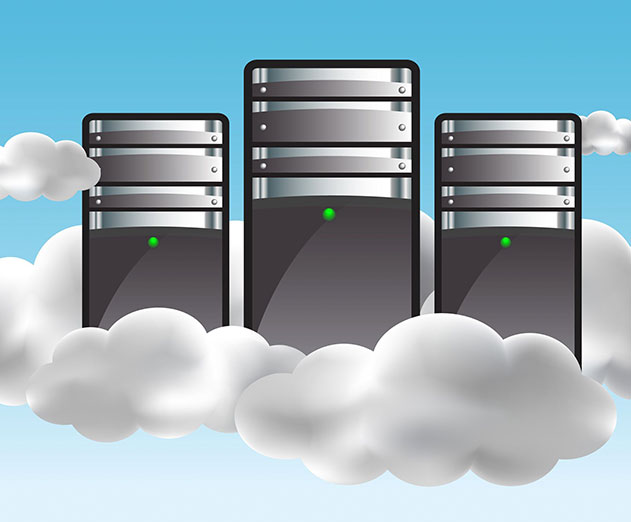Cloud Services
Everything you need to know about DBaaS
Tuesday, August 15, 2017

|
Richard Harris |
How cloud DBaaS and infrastructure can help developers and IT teams grow their businesses faster than ever.
With any business, there comes a constant string of decisions a start-up founder, CTO, or small business owner must make to assure that the technologies they manage are being utilized to their fullest potential. Managing such technologies may have been difficult in the past, but in today's cloud environments, which provide virtually limitless capabilities, the burden is being increasingly outsourced to a cloud provider. The shear power and ease of use that a cloud infrastructure can deliver makes hosting your own in-house infrastructure seem unattractive - especially for those at the beginning stages of a company.
Peter Nichol is the CEO of Instaclustr, an Open Source-as-a-Service company that includes managed Apache Cassandra database hosting. We sat down with him to talk about the DBaaS industry and why it makes sense for developers to make the transformation.
Nichol: Implementing a DBaaS strategy can really provide value at every stage for a developer, from initial development to deployment and onward as applications scale. During prototyping and early development, the last thing that a developer wants to do is build (or rebuild) the underlying infrastructure, including database software and related services. By going the hosted database route, engineers working on a project gain the advantage of developer nodes that include all the cloud provider and infrastructure solutions they need, including software that's already installed and preconfigured. Spinning these nodes up takes literally minutes, whereas otherwise it could take days to have everything installed and configured correctly if you were starting from scratch.
During the transition to production and testing, developers using a DBaaS solution can take then advantage of the ability to easily spin-up and decommission servers of all types and sizes. Being able to test a different range of infrastructure components quickly and in a controlled configuration offers a variety of benefits during this phase of the development lifecycle.
Having a third-party continually monitor the health and performance of this data-layer infrastructure really provides developers and operational teams with the freedom to concentrate on the application and on customer-related priorities.
Nichol: It really comes down to the trifecta of must-haves when building web-scale applications: scale, availability, and performance. If a developer thinks their application could really go viral, or could truly achieve global reach, then it's important to have built for scale from day one. And both performance and availability absolutely have to be maintained while that scale is achieved. Apache Cassandra is without peer when it comes to deploying a high availability infrastructure. Its decentralized architecture ensures that there are no single points of failure.
This is also true when it comes to the scale of the largest production deployments using Cassandra, including Apple with over 100,000 nodes storing over 10 PB of data, and Netflix with 2,500 nodes, 420 TB and over 1 trillion requests per day. Even at these scales, performance can be measured in sub milliseconds.
Bottom line: Cassandra is a great choice when you don't want to be limited in your ability to scale, and when you need the highest possible levels of data availability.
Nichol: In the early days, the majority of our customers were well-funded startups. They selected Instaclustr so that they could concentrate their limited technical resources on developing their applications. We now have a pretty wide variety of customers, across industries, using our solutions to deploy their applications into production.
One of our most memorable early startup customers literally went viral overnight, with a messaging application garnering over 100,000 new users per day. The scale and performance requirements of this growth were both significant and technically challenging. We learned a lot during those early days and have been able to engineer the teachings of that experience into our platform, in the form of improvements to automation, configurations and features that better support performance, scale, and high availability.
Some of our customers come to us after they have had a significant outage, or when they realize their cluster performance is suboptimal and is causing them concerns. In such cases, we undertake a health check and work towards stabilizing their clusters and production environment, then plan a controlled migration to our platform, which we can complete with zero downtime (where the technologies and environments permit).
Nichol: At Instaclustr we are focused on delivering the leading data-related open source technologies for our customers. Our DBaaS platform and managed solutions environment includes integrated data-related technologies that interact directly with production Apache Cassandra databases.
Additional technologies and software components include Apache Spark for deploying a co-located analytics engine with production data, and other core data-related technologies for search, including both Elasticsearch and Apache Lucene.

Nichol: We're working on further development of our platform to include the most relevant open source technologies that solve real data problems for our customers. Soon we'll be adding a managed solution for Apache Kafka to complement our database, search, and analytics capabilities.
We are also working on the development of specific core technology stacks related to specific use cases. For example, our customers will be able to select and provision a cluster-type that includes the core technologies for an IoT application, with relevant deployed architecture and infrastructure components, and suitable security settings and configurations.
Our focus is on providing continuous care for our customers' back-end infrastructure, with automation, monitoring, and ongoing maintenance so that they have a highly reliable and scalable platform from which to grow their business seamlessly.
Nichol: As per our strategy and focus over the next 12 months, we see a continued movement towards management of additional components of the data layer, including integrated data-related software and infrastructure components. We are also seeing continued adoption of cloud services by more traditional enterprises, as they undertake digital transformation strategies. Many of these strategies include managed solutions as a key priority.
There's also a rapidly growing push towards open source technologies, and a rejection of proprietary solutions. Many enterprises now prefer to deploy open source solutions, in order to avoid the risks associated with vendor and technology lock in.
Peter Nichol is the CEO of Instaclustr, an Open Source-as-a-Service company that includes managed Apache Cassandra database hosting. We sat down with him to talk about the DBaaS industry and why it makes sense for developers to make the transformation.
ADM: When does - and when doesn't - a Database-as-a-Service strategy make sense for an app developer?
Nichol: Implementing a DBaaS strategy can really provide value at every stage for a developer, from initial development to deployment and onward as applications scale. During prototyping and early development, the last thing that a developer wants to do is build (or rebuild) the underlying infrastructure, including database software and related services. By going the hosted database route, engineers working on a project gain the advantage of developer nodes that include all the cloud provider and infrastructure solutions they need, including software that's already installed and preconfigured. Spinning these nodes up takes literally minutes, whereas otherwise it could take days to have everything installed and configured correctly if you were starting from scratch.
During the transition to production and testing, developers using a DBaaS solution can take then advantage of the ability to easily spin-up and decommission servers of all types and sizes. Being able to test a different range of infrastructure components quickly and in a controlled configuration offers a variety of benefits during this phase of the development lifecycle.
Having a third-party continually monitor the health and performance of this data-layer infrastructure really provides developers and operational teams with the freedom to concentrate on the application and on customer-related priorities.
ADM: Speaking to the underlying database, what makes Cassandra well suited for app development versus other NoSQL alternatives?
Nichol: It really comes down to the trifecta of must-haves when building web-scale applications: scale, availability, and performance. If a developer thinks their application could really go viral, or could truly achieve global reach, then it's important to have built for scale from day one. And both performance and availability absolutely have to be maintained while that scale is achieved. Apache Cassandra is without peer when it comes to deploying a high availability infrastructure. Its decentralized architecture ensures that there are no single points of failure.
This is also true when it comes to the scale of the largest production deployments using Cassandra, including Apple with over 100,000 nodes storing over 10 PB of data, and Netflix with 2,500 nodes, 420 TB and over 1 trillion requests per day. Even at these scales, performance can be measured in sub milliseconds.
Bottom line: Cassandra is a great choice when you don't want to be limited in your ability to scale, and when you need the highest possible levels of data availability.
ADM: Walk us through a use case - how has a customer implemented Instaclustr's solutions?
Nichol: In the early days, the majority of our customers were well-funded startups. They selected Instaclustr so that they could concentrate their limited technical resources on developing their applications. We now have a pretty wide variety of customers, across industries, using our solutions to deploy their applications into production.
One of our most memorable early startup customers literally went viral overnight, with a messaging application garnering over 100,000 new users per day. The scale and performance requirements of this growth were both significant and technically challenging. We learned a lot during those early days and have been able to engineer the teachings of that experience into our platform, in the form of improvements to automation, configurations and features that better support performance, scale, and high availability.
Some of our customers come to us after they have had a significant outage, or when they realize their cluster performance is suboptimal and is causing them concerns. In such cases, we undertake a health check and work towards stabilizing their clusters and production environment, then plan a controlled migration to our platform, which we can complete with zero downtime (where the technologies and environments permit).
ADM: What other technologies does Instaclustr manage that are relevant to app developers?
Nichol: At Instaclustr we are focused on delivering the leading data-related open source technologies for our customers. Our DBaaS platform and managed solutions environment includes integrated data-related technologies that interact directly with production Apache Cassandra databases.
Additional technologies and software components include Apache Spark for deploying a co-located analytics engine with production data, and other core data-related technologies for search, including both Elasticsearch and Apache Lucene.

Peter Nichol is the CEO of Instaclustr
ADM: What's next for Instaclustr?
Nichol: We're working on further development of our platform to include the most relevant open source technologies that solve real data problems for our customers. Soon we'll be adding a managed solution for Apache Kafka to complement our database, search, and analytics capabilities.
We are also working on the development of specific core technology stacks related to specific use cases. For example, our customers will be able to select and provision a cluster-type that includes the core technologies for an IoT application, with relevant deployed architecture and infrastructure components, and suitable security settings and configurations.
Our focus is on providing continuous care for our customers' back-end infrastructure, with automation, monitoring, and ongoing maintenance so that they have a highly reliable and scalable platform from which to grow their business seamlessly.
ADM: How do you see the DBaaS industry changing over the next couple years?
Nichol: As per our strategy and focus over the next 12 months, we see a continued movement towards management of additional components of the data layer, including integrated data-related software and infrastructure components. We are also seeing continued adoption of cloud services by more traditional enterprises, as they undertake digital transformation strategies. Many of these strategies include managed solutions as a key priority.
There's also a rapidly growing push towards open source technologies, and a rejection of proprietary solutions. Many enterprises now prefer to deploy open source solutions, in order to avoid the risks associated with vendor and technology lock in.

Become a subscriber of App Developer Magazine for just $5.99 a month and take advantage of all these perks.
MEMBERS GET ACCESS TO
- - Exclusive content from leaders in the industry
- - Q&A articles from industry leaders
- - Tips and tricks from the most successful developers weekly
- - Monthly issues, including all 90+ back-issues since 2012
- - Event discounts and early-bird signups
- - Gain insight from top achievers in the app store
- - Learn what tools to use, what SDK's to use, and more
Subscribe here









